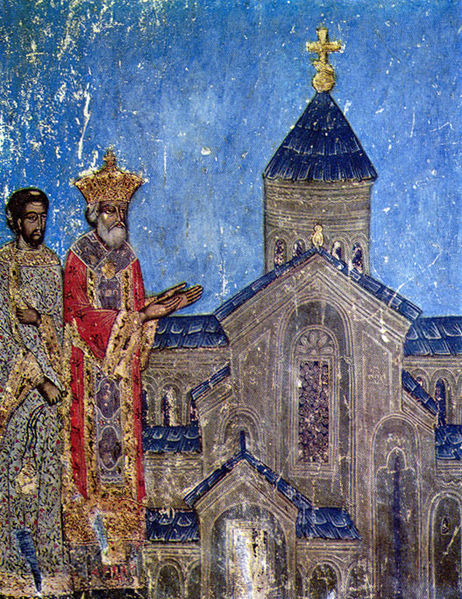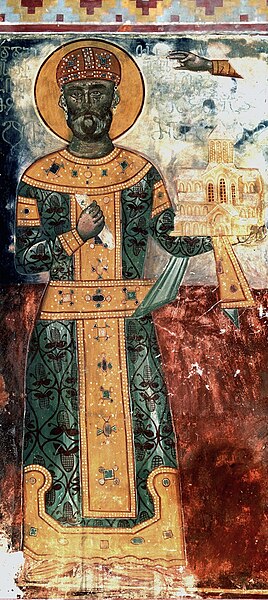Tamar the Great reigned as the Queen of Georgia from 1184 to 1213, presiding over the apex of the Georgian Golden Age. A member of the Bagrationi dynasty, her position as the first woman to rule Georgia in her own right was emphasized by the title mepe ("king"), afforded to Tamar in the medieval Georgian sources.
Fresco at the church of Dormition in Vardzia
Tamar (left) and George III (right). The earliest surviving portrait of Tamar from the church of the Dormition at Vardzia, c. 1184–1186.
Tamar as depicted on a 13th-century mural from the Kintsvisi monastery.
The Iviron monastery on Mount Athos, a major center of Christian culture favored by the Georgian crown.
Georgia is a transcontinental country in Eastern Europe and West Asia. It is part of the Caucasus region, bounded by the Black Sea to the west, Russia to the north and northeast, Turkey to the southwest, Armenia to the south, and Azerbaijan to the southeast. Georgia covers an area of 69,700 square kilometres (26,900 sq mi). It has a population of 3.7 million, of which over a third live in the capital and largest city, Tbilisi. Georgians, who are indigenous to the region, constitute a majority and a titular nation in Georgia.
King Mirian III converted the nation to Christianity in the 4th century.
Northwestern Georgia is home to the medieval defensive Svan towers of Ushguli and Mestia.
Bedia Chalice, a medieval Georgian goldsmithery dated c. 999 AD.
David the Builder, the original architect of the Golden Age. Fresco from Gelati monastery.








